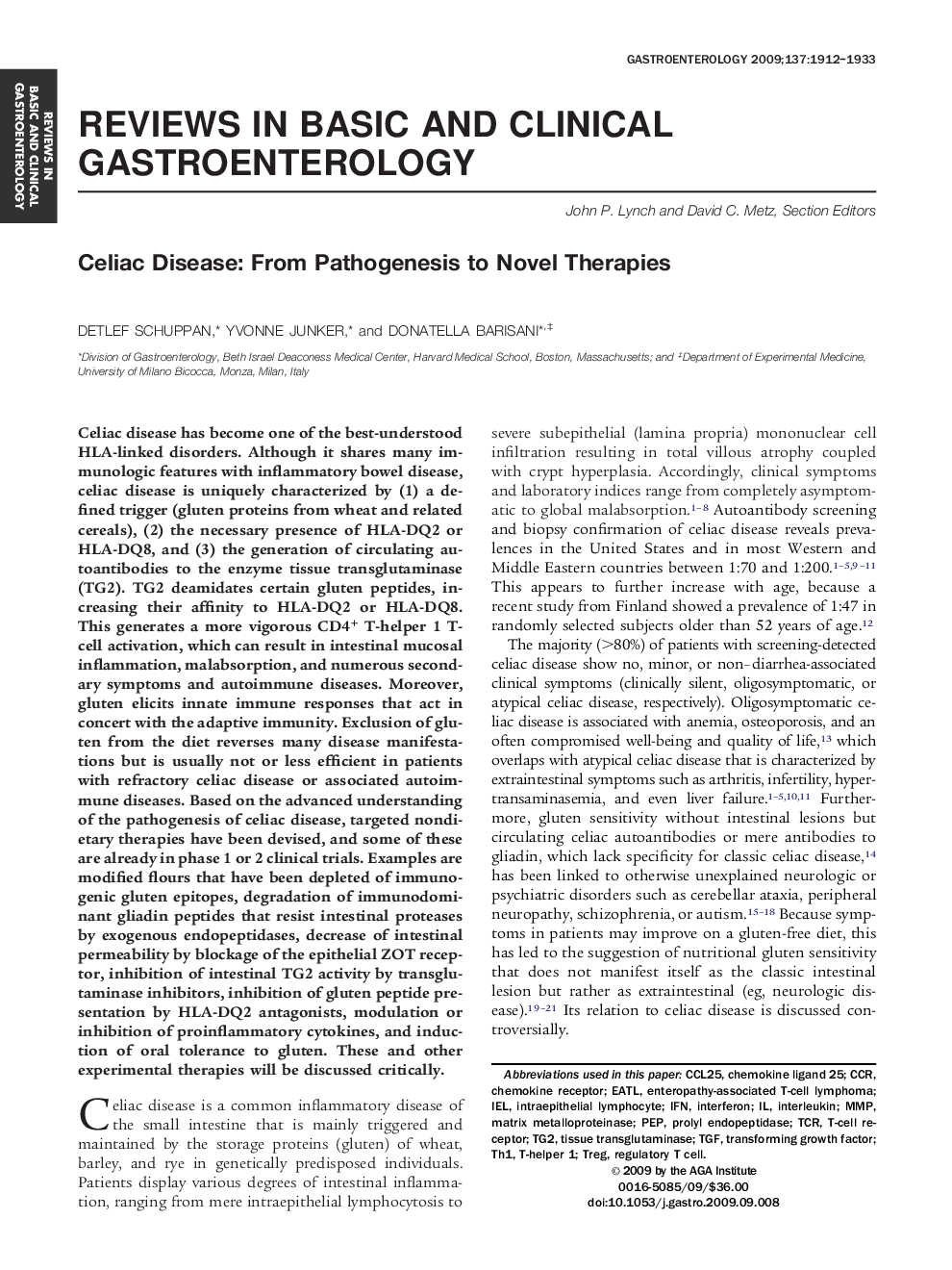| Article ID | Journal | Published Year | Pages | File Type |
|---|---|---|---|---|
| 3297096 | Gastroenterology | 2009 | 22 Pages |
Celiac disease has become one of the best-understood HLA-linked disorders. Although it shares many immunologic features with inflammatory bowel disease, celiac disease is uniquely characterized by (1) a defined trigger (gluten proteins from wheat and related cereals), (2) the necessary presence of HLA-DQ2 or HLA-DQ8, and (3) the generation of circulating autoantibodies to the enzyme tissue transglutaminase (TG2). TG2 deamidates certain gluten peptides, increasing their affinity to HLA-DQ2 or HLA-DQ8. This generates a more vigorous CD4+ T-helper 1 T-cell activation, which can result in intestinal mucosal inflammation, malabsorption, and numerous secondary symptoms and autoimmune diseases. Moreover, gluten elicits innate immune responses that act in concert with the adaptive immunity. Exclusion of gluten from the diet reverses many disease manifestations but is usually not or less efficient in patients with refractory celiac disease or associated autoimmune diseases. Based on the advanced understanding of the pathogenesis of celiac disease, targeted nondietary therapies have been devised, and some of these are already in phase 1 or 2 clinical trials. Examples are modified flours that have been depleted of immunogenic gluten epitopes, degradation of immunodominant gliadin peptides that resist intestinal proteases by exogenous endopeptidases, decrease of intestinal permeability by blockage of the epithelial ZOT receptor, inhibition of intestinal TG2 activity by transglutaminase inhibitors, inhibition of gluten peptide presentation by HLA-DQ2 antagonists, modulation or inhibition of proinflammatory cytokines, and induction of oral tolerance to gluten. These and other experimental therapies will be discussed critically.
